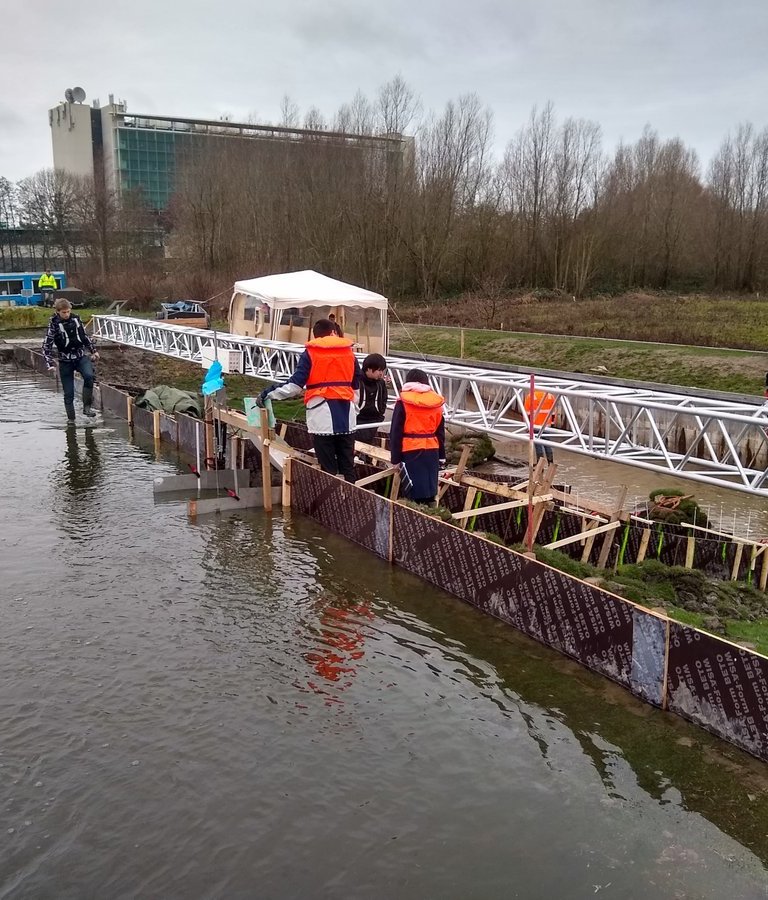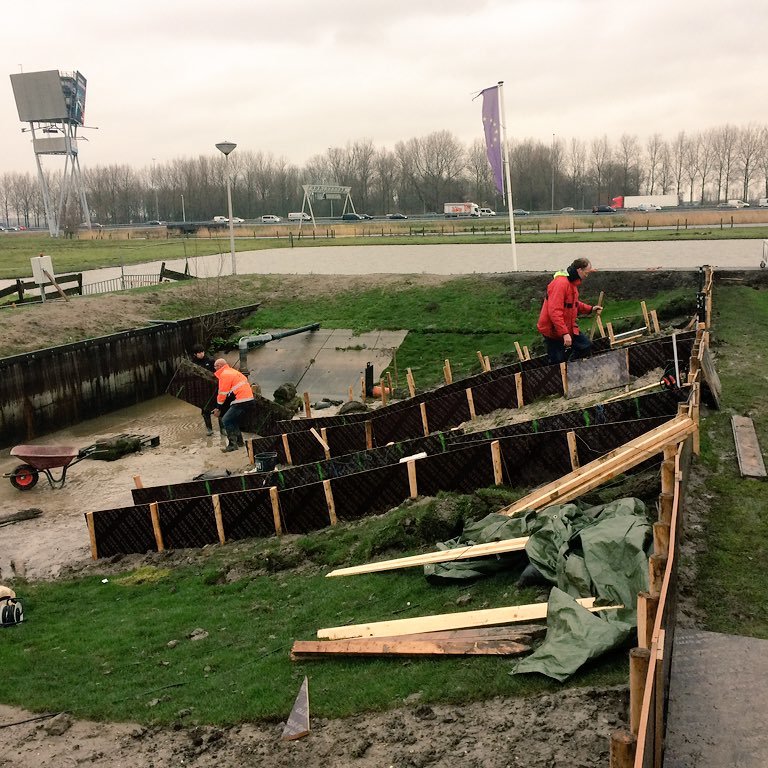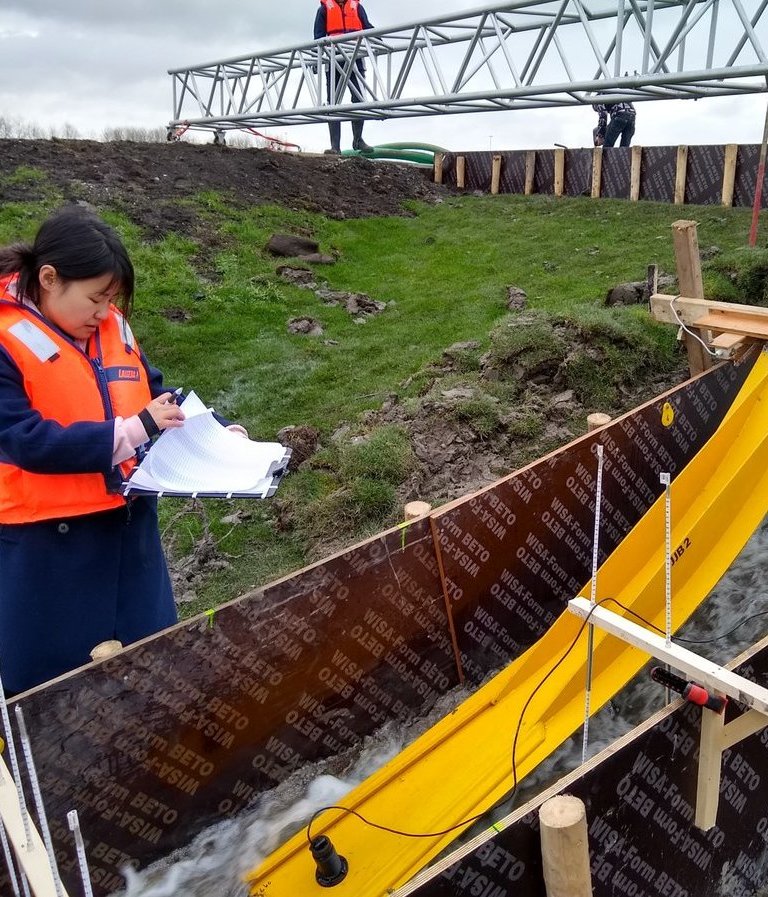Come rain or shine, it's experiments galore at Delft's Flood Proof Holland polder. The site is the location of a test dyke where a variety of studies have been taking place. How well does a layer of clay, loam or sand withstand water flooding over a dyke? How long does it take before the sand under a dyke is washed away by the force of the water in contact with the dyke? TU Delft researchers Myron van Damme and Joost Pol are putting it all to the test.
The scientists are happy with the arrival of the test dyke. Van Damme: “We need a place like Flood Proof Holland for dyke research. You can see the test dyke as a cross between a lab and a dyke along a river. If you want to conduct tests on a real dyke, you need a dyke that it's okay to wreck; so it can't be in use any more. That kind of dyke is hard to find in the Netherlands – a test dyke in a safe environment like Flood Proof Holland is ideal. The great thing is that we can test to scale on this special dyke. This provides a lot of reliable data. Flow channels in the lab are simply too small to be representative of a real dyke.”
One of the studies is about piping. Piping is an important failure mechanism in dykes: the water flows under the dyke via a layer of sand and comes up behind it. After some time, the water can push the sand along, and a channel – a pipe – starts to form under the dyke. If this process continues for too long, it can eventually cause the dyke to collapse.
Joost Pol is pleased to be able to conduct studies at the polder: “I see Flood Proof Holland as an advanced playground. I know nowhere else where I can conduct my piping research on this scale. We can now see with our own eyes the exact tipping point when piping starts to take place and how fast the erosion process goes. Only after 43 hours of continual testing had a small channel formed all the way through the dyke; the dyke was at breaking point. These results corroborate the expectations we had that were based on tests in the lab. To gain a better understanding of how this works in the longer term, we want to repeat the study this summer and next year.’
Besides the piping research, tests were also performed to determine what effects different dyke-building materials had at high water. The dyke has different layers: clay, loam and sand. Van Damme: “It's an advantage for dyke managers to know which materials will be resistant enough. Not all dykes have to withstand the same force. For many inland dykes, it is unlikely that they will have to withstand heavy wave overtopping. It depends on the situation: some dykes can be reinforced using cheaper, locally sourced materials.”
Another question is how much time there is to evacuate in the unlikely event that the dyke breaks. Van Damme explains: “The evacuation time needed in a crisis situation has an effect on the choices made by the water authority. It's exactly in this kind of situation that you need the information to know precisely what to do. Thanks to representative research and the resulting reliable data, we can give crisis managers the guidance they need.”
The studies at Flood Proof Holland are being conducted in cooperation with TU Delft, VPdelta, NWO-TTW, Saitama University, Deltares, HKV, Utrecht University and Infram.
If you are interested in visiting Flood Proof Holland, please contact Lindsey Schwidder (L.S.Schwidder@tudelft.nl). For more information about the research, please contact Myron van Damme (M.vanDamme@tudelft.nl) or Joost Pol (j.c.pol@tudelft.nl).


